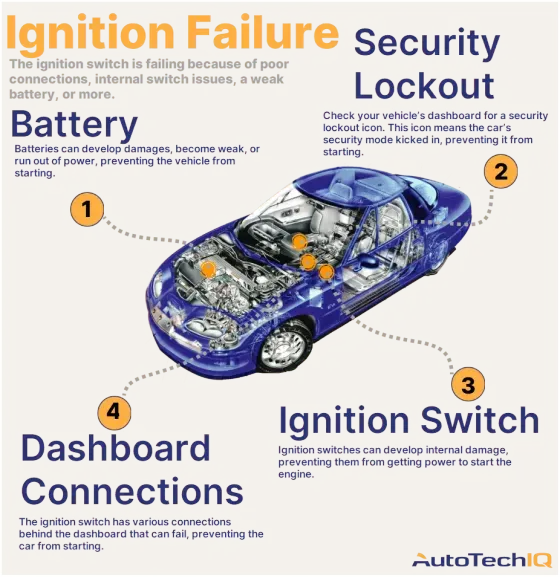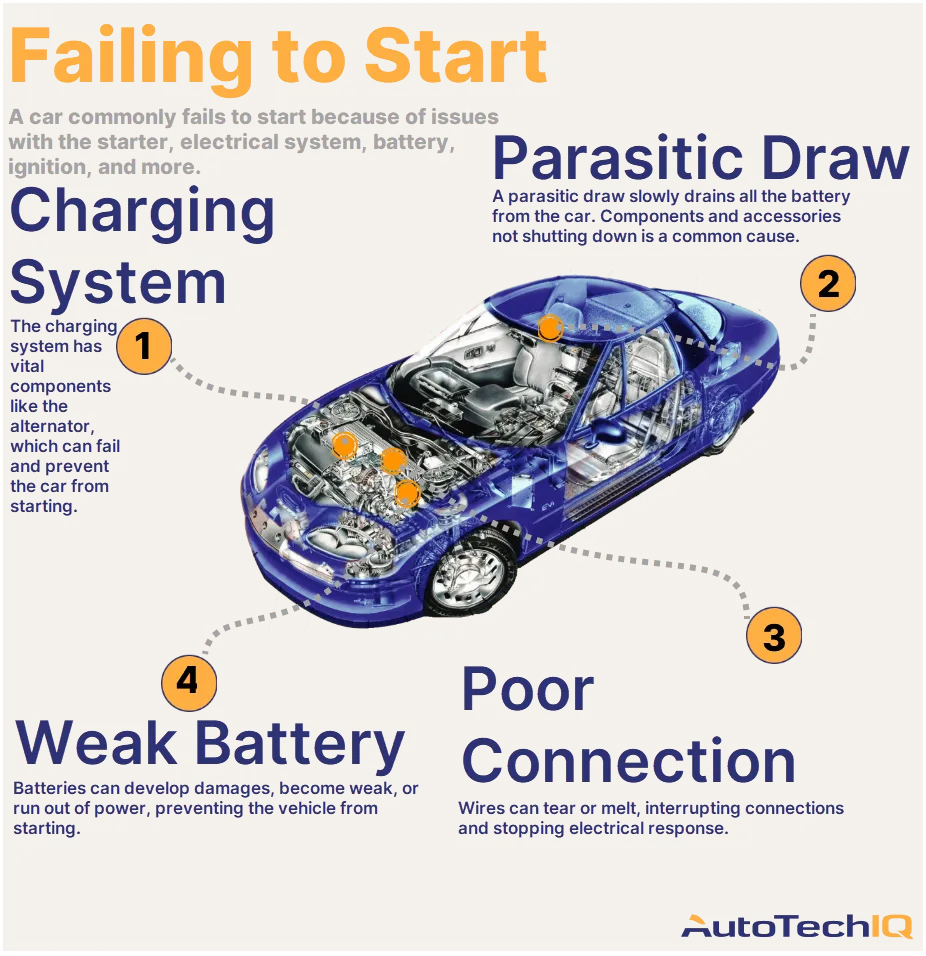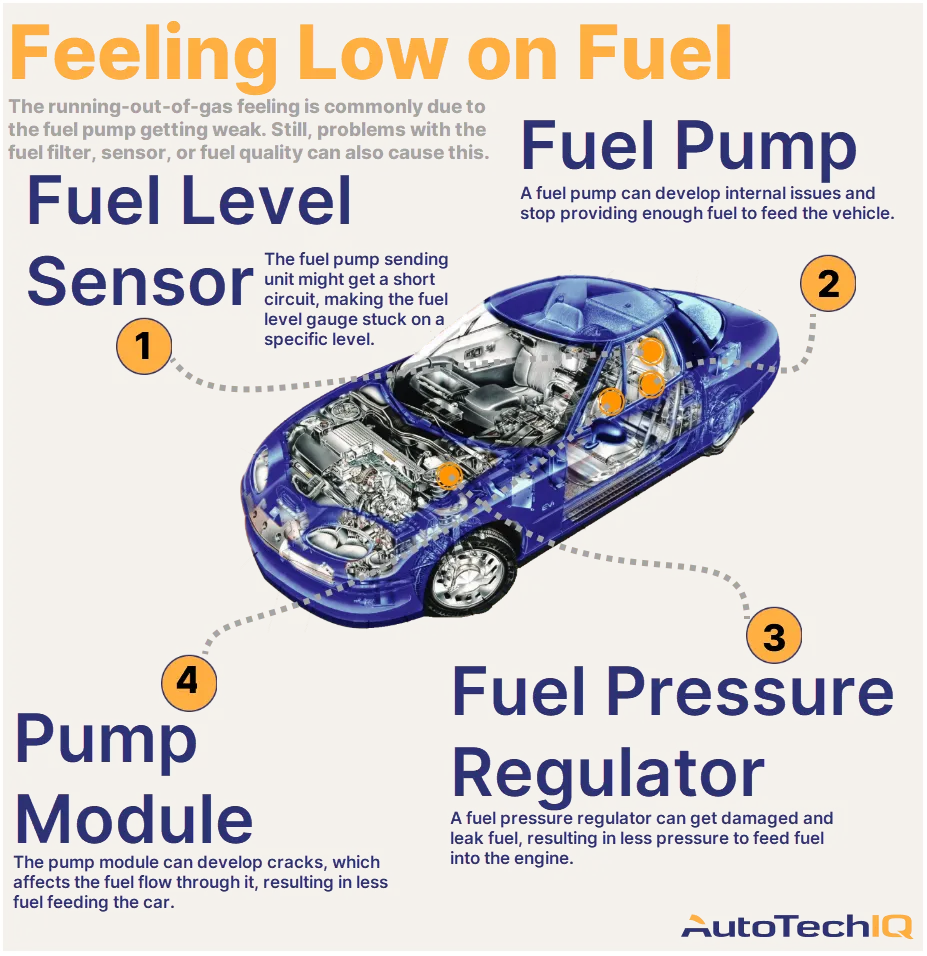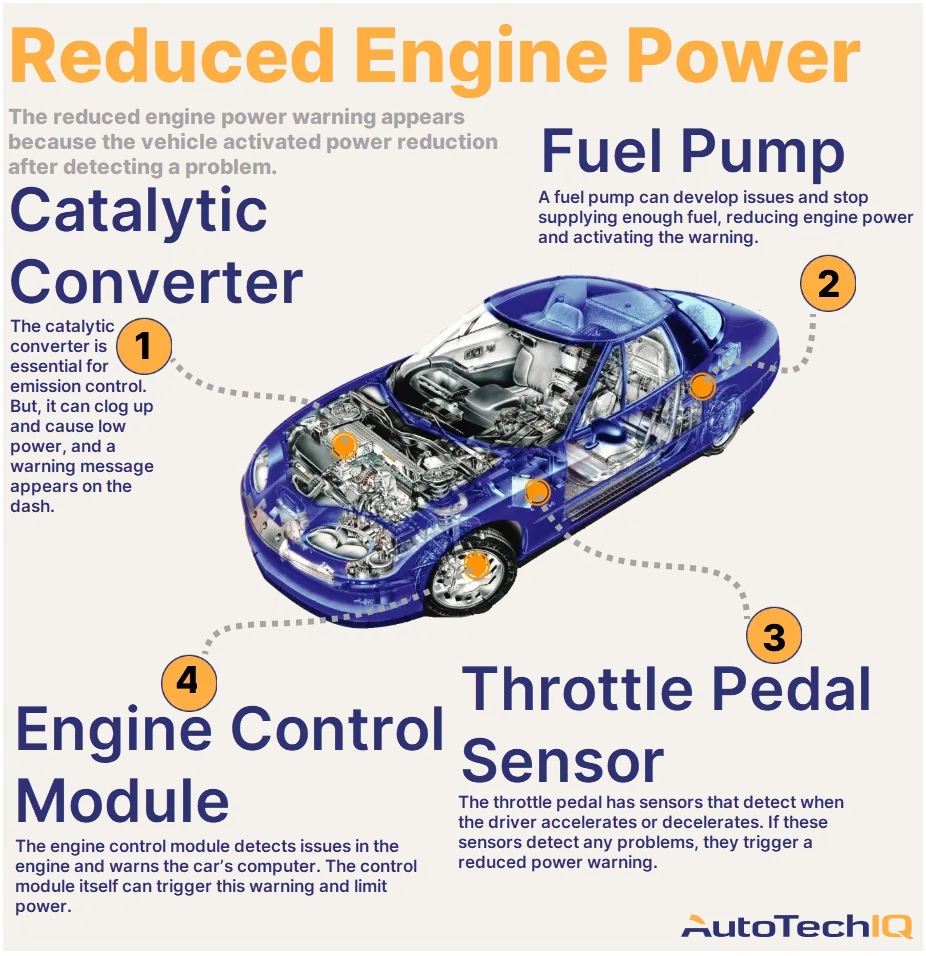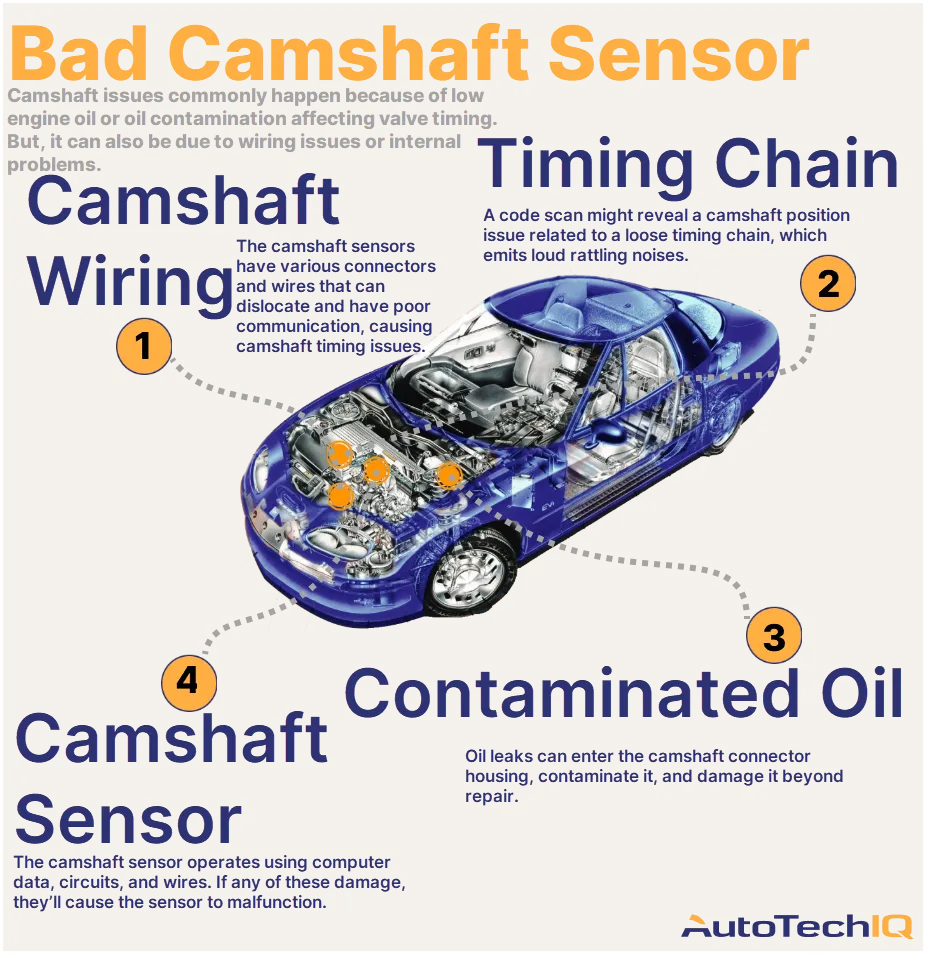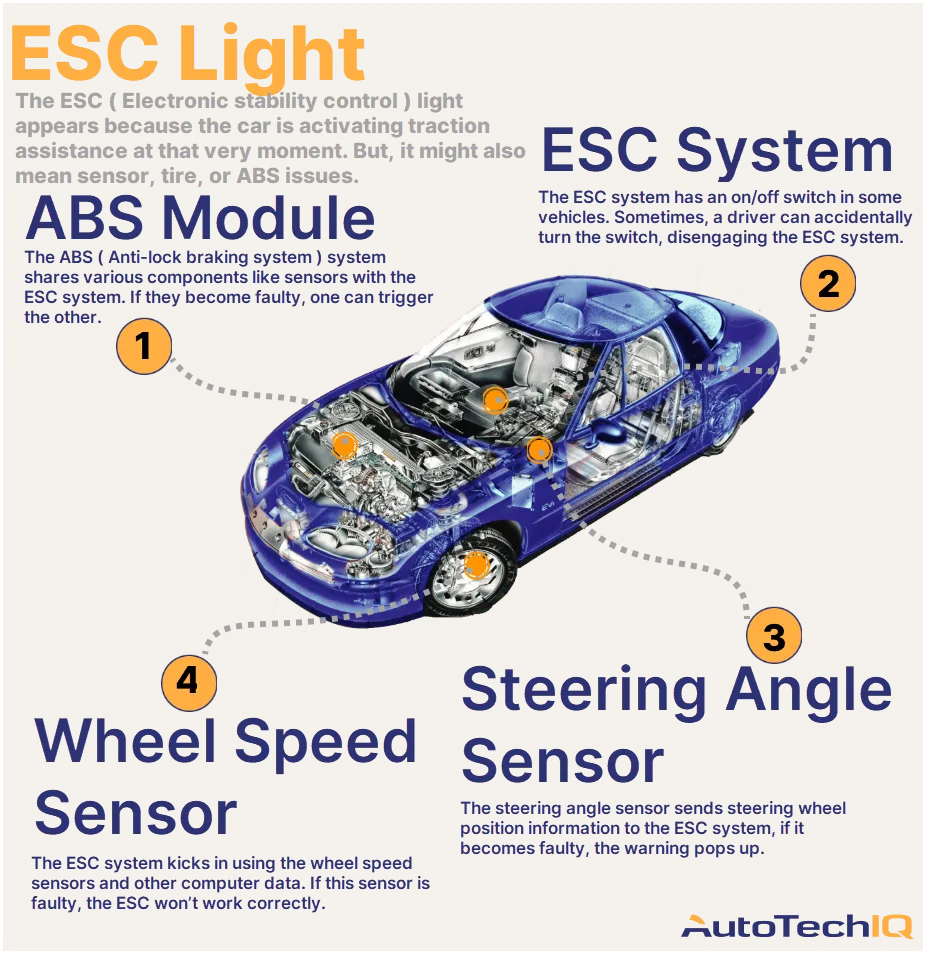Does the engine stay silent when you start the car? The car needs battery power to start. The vehicle is hard to start if the battery is weak or faulty. This happens even if you keep trying to start because the battery can't send power to the system that triggers the engine. Sometimes a weak battery seems like a failing ignition switch, but it's actually a battery-related issue.
If you notice the dashboard lights activating and deactivating, clicking or chattering noises, engine cranks, radio issues, or no lights activating, save this information; they're essential if you go to an auto shop later.
Does your vehicle stall immediately after starting? The ignition switch is like a switchboard that controls your car's power flow. When starting the vehicle, the switch powers different car parts. If the switch wears out or is damaged, it won't send power to where it should, making the car difficult to start. Sometimes, if the contacts inside the switch burn or wear out, the car starts and dies because it's not getting the necessary power to stay running.
If you notice the vehicle failing to start, the lack of dashboard lights, the key switch turning hard, or the key stuck in the ignition, save this information; they're essential if you go to an auto shop later.
Does the vehicle momentarily die and then restart while driving? The ignition switch controls the power flow in your car. Over time, it can wear out and become loose due to constant movement and road vibrations. This vibration can cause the switch to lose contact, stopping the car temporarily.
If you notice sudden stops, intermittent dash lights, inoperative accessories, the car changing behavior when you touch keys, or the car changing behavior on rough roads, save this information; they're essential if you go to an auto shop later.
Does the security light blink when you start the car? Modern cars have security systems that check if the driver uses the right key. If the key is not recognized, the car's engine, fuel, and starting systems won't work. When this happens, the anti-theft light flashes on the car's dashboard.
If you notice the security light on the car's dashboard, save this information; they're essential if you go to an auto shop later.
Is the car's keys stuck in the ignition lock cylinder? The shifter has safety switches to prevent the key from being removed unless the car is in park. If the shifter mechanism is broken or stuck, the car may not turn off even when it's in park, which can leave the engine running.
If you notice the shifter is hard to move or the shift cannot move to park, save this information; they're essential if you go to an auto shop later.
Is your car displaying any dash light when you start it? Ignition switches have a limited power capacity, so they use relays to handle most of the load. If these relays are worn or corroded, they won't transfer the necessary power, even with the ignition switch working. This can make the car's systems not work correctly.
If you notice the vehicle cranks for a long time before starting, save this information; they're essential if you go to an auto shop later.
